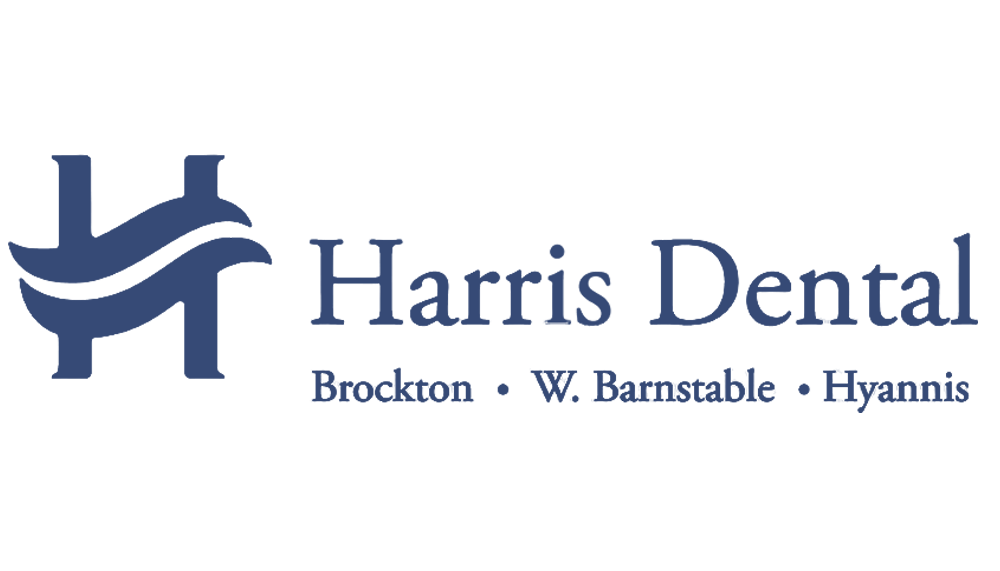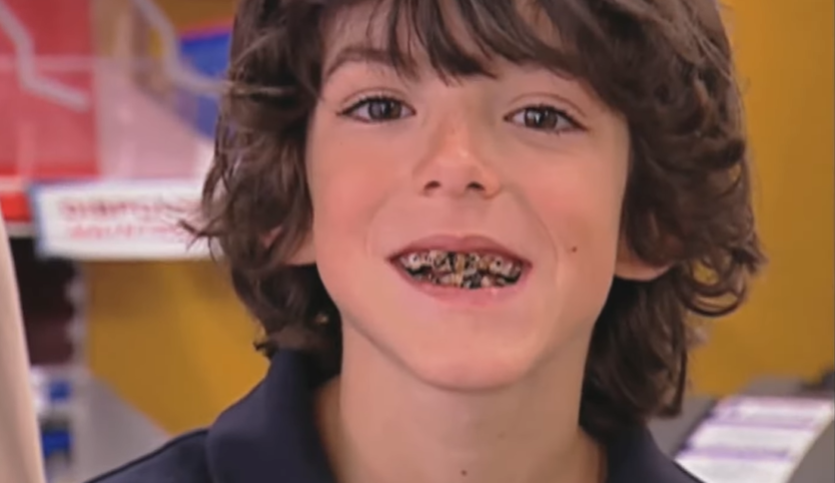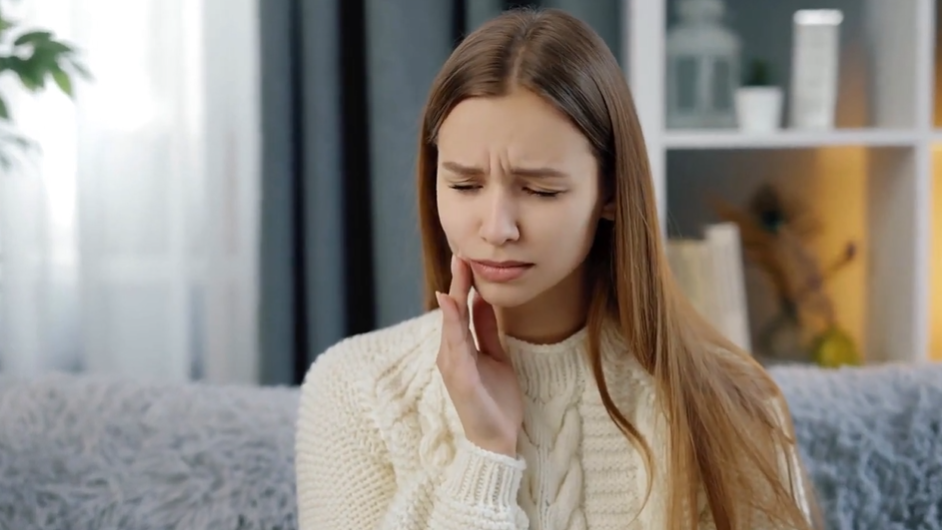If you buy through links on our site, we may earn a small affiliate commission to help support the blog - at no extra cost to you. It never influences our product selection process. Thank you!
Have dental bonding procedures left your teeth damaged rather than improved? You’re not alone. Many patients who sought this popular cosmetic treatment for a perfect smile have encountered unexpected complications that compromised their dental health.
Dental bonding involves applying resin material to teeth to fix cosmetic issues, but when performed incorrectly or with poor materials, the consequences can be devastating. From increased sensitivity and discoloration to structural damage and infection, the negative outcomes might far outweigh the intended benefits. In this text, we’ll explore how bonding can damage teeth, warning signs to watch for, and what you can do if you’re experiencing problems with your dental bonding.
What Is Dental Bonding and How It Works
Dental bonding is a cosmetic procedure that uses tooth-colored resin material to repair damaged, discolored, or misshapen teeth. The resin—a durable plastic material—is applied to the tooth surface and hardened with a special light, permanently bonding it to your tooth. Dentists often recommend this treatment for patients seeking to improve their smile’s appearance without invasive procedures.
The bonding process typically takes 30-60 minutes per tooth and rarely requires anesthesia unless used to fill cavities. Your dentist begins by selecting a resin shade that closely matches your natural teeth, then roughens the tooth surface and applies a conditioning liquid to help the bonding material adhere. After applying and molding the putty-like resin, they use an ultraviolet light to harden the material. Once hardened, your dentist shapes and polishes the resin to match surrounding teeth.
“I’ve seen countless patients choose bonding for its affordability and immediate results,” says Dr. Todd B. Harris. “While it’s an excellent solution for minor cosmetic issues, proper application technique is crucial for longevity and preventing damage to the underlying tooth structure.”
Sarah M., a 32-year-old patient, shared: “I initially loved my dental bonding—it fixed the small chip in my front tooth perfectly. But after three years, I noticed the bonding was staining and starting to pull away from my natural tooth. My new dentist explained the original application wasn’t done correctly, which eventually damaged my enamel when it needed to be removed.”
Dental bonding serves many purposes including repairing chipped teeth, closing small gaps, improving tooth shape, covering discoloration, protecting exposed roots, and filling cavities. Unlike veneers or crowns that require custom fabrication in a lab, bonding can be completed in a single office visit, making it both convenient and cost-effective for minor cosmetic improvements.
Common Ways Dental Bonding Can Damage Teeth

Dental bonding is generally considered safe when performed correctly, but several factors can lead to tooth damage or restoration failure. These issues typically stem from technical errors, material limitations, or preparatory mistakes rather than the bonding process itself.
Improper Application Techniques
Application errors represent one of the most common causes of bonding-related tooth damage. Poorly applied bonding material may damage surrounding teeth or gum tissue when placement isn’t precise. Moisture contamination during the procedure significantly reduces adhesion strength, often leading to premature detachment that exposes your tooth to potential damage.
Dr. Todd B. Harris notes, “I’ve seen many patients come in with failed bonding work that caused more harm than good. One patient, Sarah, had bonding applied by an inexperienced dentist who didn’t properly isolate the treatment area. Within months, the bonding began separating from her teeth, trapping bacteria underneath and causing decay that was worse than her original chip.”
Inexperienced practitioners may inadvertently increase risks of enamel erosion or create restorations with poor fit, resulting in bite issues or additional tooth problems down the line.
Poor Material Quality
The quality of bonding materials directly impacts both longevity and safety of the restoration. Composite resins used in bonding are less stain resistant and more prone to chipping or cracking compared to alternatives like porcelain veneers or crowns. These materials absorb stains from coffee, tea, wine, and tobacco more readily than natural tooth enamel.
Some patients experience allergic reactions to components in the bonding resin, though this is relatively rare. These reactions typically manifest as inflammation or irritation in the surrounding oral tissues, creating discomfort and potentially damaging the gum line.
“The difference between premium and budget bonding materials is substantial,” explains Dr. Harris. “I had a patient, Michael, who opted for a discount bonding procedure at another practice. Within a year, the material had discolored and developed microscopic cracks that harbored bacteria, eventually leading to decay beneath what should have been a protective restoration.”
Inadequate Tooth Preparation
Proper surface preparation forms the foundation of successful dental bonding. If your tooth surface isn’t thoroughly cleaned and appropriately textured before application, the bonding material won’t adhere properly. This compromised adhesion leads to early failure of the restoration and possibly enamel damage when the bonding detaches.
The etching process, which roughens the tooth surface microscopically to improve adhesion, must be performed with precision. Over-etching can damage enamel unnecessarily, while under-etching results in weak bonds that fail prematurely.
Signs Your Dental Bonding Has Damaged Your Teeth

Dental bonding complications can manifest through several distinct warning signs that shouldn’t be ignored. These indicators often appear gradually and may signal underlying issues with your bonding procedure or materials used.
Increased Sensitivity and Pain
Tooth sensitivity following dental bonding isn’t normal beyond a brief adjustment period. You’ll notice sharp pain when consuming hot, cold, or sweet foods that wasn’t present before the procedure. This sensitivity often indicates that the bonding material wasn’t properly applied, leaving your tooth’s nerves vulnerable to external stimuli.
“I had my front tooth bonded after a small chip, and within weeks, I couldn’t drink my morning coffee without wincing,” shares Patricia, a dental patient from Chicago. “My dentist explained that moisture contamination during application had compromised the seal between the bonding and my tooth.”
Persistent pain around bonded teeth might also signal irritation or damage to surrounding gum tissue that occurred during the application process. Inflammation, redness, or swelling near the bonding site requires immediate professional evaluation to prevent further complications.
Discoloration and Staining
Bonding materials are more susceptible to staining than natural tooth enamel or porcelain restorations. You’ll typically notice yellowing or darkening of bonded areas within 2-3 years, especially if you consume coffee, red wine, or tobacco products regularly. The color discrepancy between your natural teeth and bonded areas becomes increasingly noticeable over time.
Discoloration often starts at the margins where the bonding meets your natural tooth structure. These edge lines may appear yellowish or brownish, creating an unattractive border around the restoration. Unlike natural teeth that respond well to whitening treatments, bonding materials remain unchanged by bleaching products, making the contrast even more pronounced.
Dr. Todd B. Harris notes, “Many patients are disappointed when their bonding discolors faster than expected. I always recommend avoiding staining substances for the first 48 hours after application when the resin is most vulnerable, and maintaining excellent oral hygiene to prolong the aesthetic results.”
Chipping and Breaking
Bonding material isn’t as durable as natural tooth enamel, making it prone to damage under certain conditions. You’ll recognize bonding failure when small pieces break away from the restored area or when the entire bonding detaches from your tooth. This typically happens when biting hard objects like ice, pens, or fingernails.
Poor adhesion between the bonding material and your tooth surface creates weak points that fracture easily. These failures often stem from inadequate tooth preparation before application or contamination during the bonding process. Patients with teeth grinding habits face higher risks of bonding damage, as the continuous pressure weakens the resin material over time.
Surface texture changes, such as roughness where the bonding was once smooth, indicate microscopic fractures that can trap stains and bacteria. These tiny cracks not only compromise aesthetics but may lead to further deterioration of the restoration if not addressed promptly by your dentist.
Prevention Tips: How to Avoid Dental Bonding Damage

Preventing damage from dental bonding starts with making informed choices and following proper maintenance protocols. Taking proactive steps significantly reduces the risk of complications that could affect both the appearance and health of your bonded teeth.
Choosing the Right Dentist
Selecting an experienced dentist skilled in bonding procedures is crucial for ensuring proper technique and material application. Qualified professionals understand the nuances of applying bonding materials correctly to prevent issues like premature failure or damage to surrounding tissues. Verify that your dentist uses high-quality bonding materials and follows strict protocols to minimize risks of allergic reactions and bond failures. Dr. Todd B. Harris emphasizes, “The difference between successful, long-lasting dental bonding and problematic outcomes often comes down to the practitioner’s experience and attention to detail during application.”
Proper Maintenance of Bonded Teeth
Daily care plays a vital role in extending the life of your dental bonding. Avoid biting hard foods or objects such as ice, pens, or fingernails that can chip the bonding material. Maintain excellent oral hygiene by brushing twice daily and flossing regularly to prevent stains or decay around the bonded area. Schedule regular dental check-ups every six months for monitoring and timely repairs if bonding wears down or gets damaged. Contact your dentist immediately if you notice roughness, sensitivity, or discomfort in bonded teeth, as these symptoms may indicate developing problems.
Alternative Treatments to Consider

If dental bonding has damaged your teeth or failed to meet your expectations, several superior alternatives exist. These options often provide better longevity and aesthetics while addressing the limitations of traditional bonding.
Veneers vs. Bonding
Porcelain veneers offer important advantages over dental bonding for many patients. These thin shells are crafted from high-quality materials that resist staining and provide a more natural appearance than composite resin. Veneers typically last 15+ years compared to bonding’s 5-7 year lifespan, making them a more durable long-term investment.
Application methods differ substantially between these treatments. Veneers require multiple dental visits, custom fabrication, and removal of a small amount of enamel, while bonding can be completed in a single appointment with minimal tooth preparation. The more comprehensive process for veneers allows dentists to correct severe discoloration, misalignment, and structural damage that bonding simply can’t address effectively.
Cost considerations play an important role in treatment selection. Veneers range from $1,100 to $3,000 per tooth, significantly higher than bonding’s $300 to $1,100 price point. Many patients find this premium justified by veneers’ superior aesthetics and durability.
“I originally chose bonding because it was more affordable,” shares Maria, a patient of Dr. Harris. “After experiencing discoloration and chipping within two years, I switched to porcelain veneers. The difference in quality and appearance was remarkable, and I’ve had no issues in the five years since.”
Modern Composite Materials
Advanced composite resins have improved bonding outcomes considerably in recent years. These newer materials offer enhanced strength and aesthetics compared to older formulations, though they still don’t match porcelain’s durability and stain resistance.
Maintenance requirements remain substantial with even the most advanced composite materials. Bonded teeth remain vulnerable to staining from coffee, tea, and red wine, requiring more vigilant care than natural teeth or porcelain restorations. Patients must exercise caution with hard foods and avoid habits like nail-biting that place excessive force on the bonding material.
The ideal application for modern composites focuses on small cosmetic fixes rather than comprehensive smile makeovers. Minor chips, small gaps between teeth, and slight discoloration respond well to these improved materials when applied by an experienced dentist.
Repairing Teeth After Bonding Damage

Damaged dental bonding doesn’t mean your smile is permanently compromised. Several effective repair options exist to restore both function and aesthetics when bonding has caused problems with your teeth.
Re-bonding Procedure
Re-bonding offers a fresh start for teeth affected by failed composite material. Your dentist removes the old, damaged bonding completely and applies new composite resin to restore your tooth’s appearance. This process typically takes 30-60 minutes per tooth and provides immediate results. Dr. Todd B. Harris notes, “Many of my patients are surprised by how groundbreaking a simple re-bonding procedure can be, especially when the initial application caused discomfort or aesthetic concerns.”
Dental Fillings
Dental fillings address decay or damage that may have developed beneath problematic bonding. After removing the old bonding material and any decayed portions, your dentist fills the cavity with composite resin or other appropriate materials. Fillings work particularly well for smaller areas of damage and help prevent further deterioration of your natural tooth structure.
Crown Placement
Crowns provide comprehensive protection for extensively damaged teeth that bonding has compromised. These full-coverage restorations fit over the entire visible portion of your tooth, restoring strength and appearance simultaneously. Porcelain crowns match your natural teeth and offer superior durability compared to bonding, lasting 15+ years with proper care.
Veneer Options
Veneers represent an excellent alternative for teeth significantly damaged by improper bonding. These thin porcelain shells adhere to the front surface of teeth, completely transforming their appearance. Veneers resist staining better than composite bonding and provide a more permanent solution.
“After my bonding started cracking and discoloring after just two years, I felt like I’d wasted my money,” shares Jennifer, a dental patient from Seattle. “My dentist recommended porcelain veneers instead. The procedure was more involved, but five years later, my smile still looks perfect—something I never experienced with bonding.”
Regular dental checkups remain crucial for identifying bonding issues before they cause important damage. Your dentist can spot early signs of bonding failure, such as slight discoloration or minor chips, and address them before they progress to more serious problems requiring extensive repairs.
Professional maintenance of repaired teeth extends their lifespan considerably. Avoid biting hard objects, maintain excellent oral hygiene practices, and schedule dental cleanings every six months to protect your investment and prevent further complications.
Conclusion
Dental bonding offers a quick fix for cosmetic issues but comes with risks when not properly executed. You deserve to know both the benefits and potential complications before choosing this procedure for your smile.
If you’re experiencing sensitivity discoloration or chipping after bonding don’t ignore these warning signs. Seek professional help immediately to prevent further damage to your natural teeth.
Remember that alternatives like porcelain veneers provide longer-lasting results for more severe issues. Whatever option you choose prioritize finding an experienced dentist who uses quality materials and follows proper techniques.
With the right care and maintenance you can restore your smile even after bonding-related problems. Your dental health is worth the investment in proper treatment and regular checkups.
Frequently Asked Questions
What is dental bonding and how does it work?
Dental bonding is a cosmetic procedure where tooth-colored resin is applied to repair damaged, discolored, or misshapen teeth. The process takes 30-60 minutes per tooth and involves selecting a matching resin shade, roughening the tooth surface, applying the resin, and hardening it with a special light. It’s an affordable, immediate solution for minor cosmetic issues that requires proper application to prevent damage to the underlying tooth structure.
What are the common complications of dental bonding?
Common complications include increased tooth sensitivity, discoloration of the bonding material, structural damage to the natural tooth, and potential infection. These issues typically result from improper application techniques, use of low-quality bonding materials, or inadequate tooth preparation. When the bonding procedure isn’t performed correctly, it can lead to long-term damage to your teeth and gums.
How long does dental bonding last?
Dental bonding typically lasts between 5-7 years with proper care. This is significantly shorter than alternatives like porcelain veneers, which can last 15+ years. Factors affecting longevity include oral hygiene practices, eating habits, and whether you engage in behaviors like nail biting or chewing hard objects. Regular dental check-ups can help monitor the condition of your bonding and extend its lifespan.
What signs indicate that dental bonding has damaged my teeth?
Key warning signs include increased tooth sensitivity or pain, discoloration around the bonding edges, chipping or cracking of the bonding material, rough edges that weren’t present initially, or visible gaps between the bonding and your natural tooth. If you experience any of these symptoms, it’s important to consult your dentist promptly to prevent further damage.
How can I prevent damage from dental bonding?
Select an experienced cosmetic dentist with proven expertise in bonding procedures. Maintain excellent oral hygiene with regular brushing and flossing. Avoid habits that can damage bonding, such as biting nails, chewing ice, or using teeth as tools. Limit consumption of staining substances like coffee, tea, and tobacco. Attend regular dental check-ups to monitor the condition of your bonding.
What alternatives to dental bonding should I consider?
Porcelain veneers are the primary alternative, offering better longevity (15+ years versus 5-7 for bonding) and superior stain resistance. Veneers provide a more natural appearance but require multiple dental visits and removal of some enamel. They’re more expensive than bonding but may be more cost-effective long-term due to their durability. For minor issues, professional whitening might be sufficient.
Can damaged dental bonding be repaired?
Yes, damaged dental bonding can be repaired through several methods. Options include re-bonding the affected area, dental fillings for smaller damages, crown placements for more extensive damage, or switching to veneers for a longer-lasting solution. The appropriate repair method depends on the extent of damage and your aesthetic goals. Most repairs can be completed in one or two dental visits.
Is dental bonding painful?
Dental bonding is typically painless and rarely requires anesthesia unless it’s being used to fill a cavity. The procedure involves minimal alteration of the tooth structure. Patients might experience temporary sensitivity after the procedure, particularly to hot and cold temperatures, but this usually subsides within a few days. Any persistent pain following bonding should be reported to your dentist immediately.






